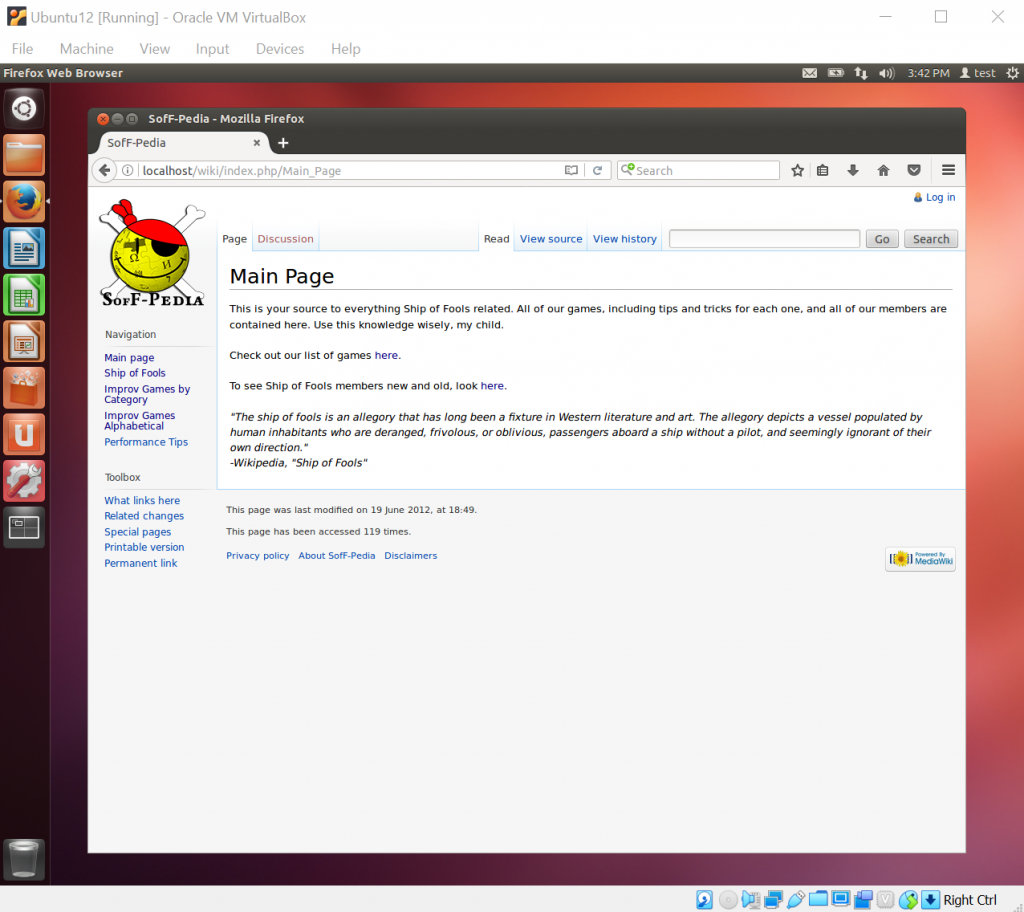
I teased this is my last post, but now it’s live!
But what is it you, absolutely do not ask? Inquiring minds would like to know, is a thing no one has said about this.
Well, sit back, fair reader, and let me spin you a yarn you almost surely do not care about.
A long time ago in the year twenty-hundred and twelve I was helping to set up a website for the Purdue college improv group, The Ship of Fools. I was helping save their old site and their old wiki. It took a bit of doing, but it was brought back together with a lot of help.
The wiki portion turned out to be an invaluable resource outside of just Ship of Fool’s needs.
In improv, after a while you notice games are hard to manage. There are often several different names for the same game depending on the group, rules are forgot, or you just have a hard time coming up with stuff to fill a set list for a show. There is many uses for a central database for this information, but sadly, as The Ship of Fools changed hands the website went away and that info and tool and lost.
Luckily (knocks on every wood), I am paranoid about that stuff, and I think I mostly backed up that information. I definitely had a database snapshot when the site was first launched back in 2012, so for sure I have the initial crop of info.
The real news is that the website is now live! It exists at https://www.improvwiki.com
It is right now on the 2012 snapshot, but I will add more info from my backups going forward. It is closed off for editing right now, but I want to give this to other groups to fill in their info as well, or just use it as a resource.
Getting this site up was not “as pie” as I would like it to be. I would like it to have been several more clicks in the direction of “as pie”.
If you read a post ago, I rebuilt my web server I have running in the cloud. It’s a LEMP (Linux, NGINX, MySQL, PHP) server. My other one was out of date and needed to be rebuilt. This is normal. The problem is sometimes as the underlying infrastructure is updated it breaks old software packages.
This was what I was like for the SoF-Pedia (precursor to Improv Wiki). I had the newest version of MediaWiki (the software that powers Improv Wiki, and Wikipedia for that matter) running on my server, and tried to rebuilt the database then run an upgrade script. Well, nothing doing. I suspect it was just too many versions behind. To get the original site up, I decided to grab a version of Ubuntu from around 2012, as this would probably have the pre-compiled software packages of the versions of software to run the original incarnation. I downloaded VirtualBox and built a local VM of Ubuntu and configured it to run a local web server for the original website. It worked!

After that mess I had to figure out how to get those pages to the new wiki. My original thought was stepping through every version of MediaWiki and running the upgrade script until it eventually hit the latest version then doing a SQL dump of the database and re-importing that. This would almost surely work but be much more a hassle. I found there was an export page option. It is built into MediaWiki at least since that version, and outputs all selected pages as an XML file. You can then import those into any MediaWiki. The old version of MediaWiki that was used has an export page option, but you have to either select each category individually or type in every page. There might have been another way to do things, but I couldn’t find anything. After the export, I imported it, and that’s where Improv Wiki sits today.
I am going to be working on it when I get the time, but I hope someone or someones finds the content useful. I know I’ll. be using it.

